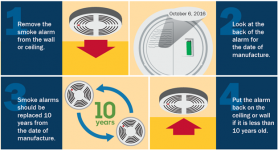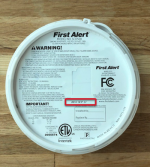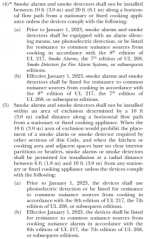Jerramundi
Senior Member
- Location
- Chicago
- Occupation
- Licensed Residential Electrician
Just reviewing NFPA 72, Chapter 29 and came across this idea of a smoke detector being "LISTED" for use near a bathroom.
I have a poorly insulated soffit serving as a ceiling in the hallway... and it's my understanding that
NFPA 72, §29.11.3.4(3) tells us to avoid mounting detectors in locations that "may become considerably warmer or cooler than the room, such as a poorly insulated ceiling..."
This forces me to consider a wall mounted option, but that would put it within 3ft of the bathroom door.
NFPA 72, §29.11.3.4(6) says it "shall not be installed within 36" of the bathroom door.... UNLESS listed for the purpose."
Now, I don't know about you, but I've NEVER come across a smoke detector that's explicitly LISTED for use near a bathroom.
I've read that photoelectric detectors are less likely to cause nuisance trips near a bathroom, but LISTED for that purpose???
I have a poorly insulated soffit serving as a ceiling in the hallway... and it's my understanding that
NFPA 72, §29.11.3.4(3) tells us to avoid mounting detectors in locations that "may become considerably warmer or cooler than the room, such as a poorly insulated ceiling..."
This forces me to consider a wall mounted option, but that would put it within 3ft of the bathroom door.
NFPA 72, §29.11.3.4(6) says it "shall not be installed within 36" of the bathroom door.... UNLESS listed for the purpose."
Now, I don't know about you, but I've NEVER come across a smoke detector that's explicitly LISTED for use near a bathroom.
I've read that photoelectric detectors are less likely to cause nuisance trips near a bathroom, but LISTED for that purpose???




